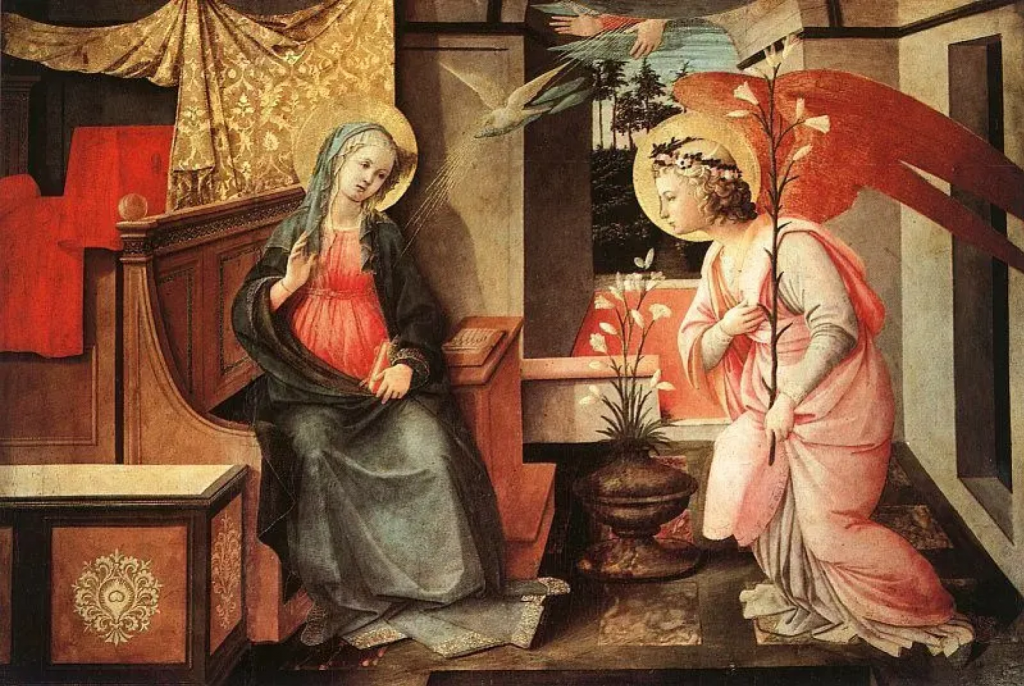
Native to Europe and Asia, this herbaceous perennial belongs to the plant family Violaceae, that also includes pansies and johnny jump ups. It grows 4-10″ tall and has a basal rosette of dark green heart-shaped leaves that are 1-3″ long. Fragrant flowers appear in late winter to spring and are typically purple to dark blue, but may be white, lilac, or rose. In the summer a second kind of flower appears. It lacks petals, is self pollinated, and produces seed capsules that spew the small seeds considerable distances. Photo Credit Wikipedia
The association of sweet violet to the Virgin Mary may go back to the ancient Greek myth regarding the birth of Iamos as related in Pindar’s Sixth Olympian. The mortal woman Evadne was impregnated by the god, Apollo, and when the time of the birth came, she left her home, gave birth in a thicket where “his tender body washed in the golden and purple light of violets.” She abandoned her newborn infant, returned home, and found that her father on the advice of the Oracle of Delphi believed that the child ” would be, for men on earth, a prophet above all mortals, and that his race would never fail.” Evadne named her child Iamos after the violets (ion) that provided him with his first bed.
When Gabriel announced God’s plan for Mary she was rightly concerned because unmarried mothers were disgraced in her time. She answered Gabriel, however, with the words “Here am I, the servant of the Lord,” The legend grew up that violets bloomed outside her window in response to Mary’s words and came to represent her humility.

Sweet violet likes shady conditions and humus-rich, consistently moist, well drained soil in USDA Hardiness Zones 4-9. It is susceptible to several pests and diseases but is easily propagated by seed and division.
The genus name, Viola, was the Latin name for one species of the genus. The specific epithet, odorata, is the Latin word meaning fragrant.
Myth 1 : Birth of Iamos. Iamos was a son of Apollon and the nymph Euadne. He was abandoned by his mother at birth. She left him lying in the Arkadian wilds on a bed of violets where he was fed honey by serpents. Eventually he was discovered by passing shepherds who named him Iamos after the violet (ion) bed. (Source: Pindar)